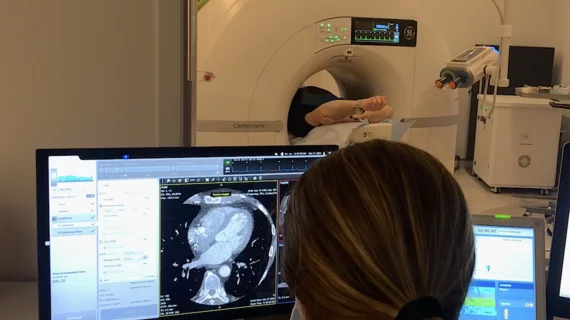CMS may double Medicare payments for cardiac CT
The Centers for Medicare and Medicaid Services (CMS) is gathering public comments on a proposal to double the amount hospitals are paid for coronary computed tomography angiography (CCTA). CMS is seeking input by Sept. 9 to consider revising how CCTA reimbursement is calculated.
The recently released 2025 Medicare Hospital Outpatient Prospective Payment System (HOPPS) proposed rule might raise Medicare reimbursement for CCTA from $175 to $386. The Society of Cardiovascular Computed Tomography (SCCT) is urging its members to submit comments over the next month in support of this change.
"This is a very unique opportunity for the field of cardiac CT, and all of cardiology for that matter, to change how cardiac CT is paid. Cardiac CT now is so essential to so many parts of cardiology, whether you're an electrophysiologist, you're involved in heart failure, preventive cardiology, or an interventional cardiologist. Pretty much every segment of cardiology uses cardiac CT in one way or another. And if we want the field to thrive and if we want there to be adequate reimbursements to hospitals, this is a unique opportunity because CMS has asked the medical community to comment on very specific questions and is open to discussion in this area and to hopefully improve what's been, frankly, an error in the last 10 years when it comes to reimbursement," Ron Blankstein, MD, associate director of cardiovascular imaging and director of cardiac computed tomography for Brigham and Women’s Hospital and a professor with Harvard Medical School, told Cardiovascular Business.
He also urges hospitals, radiologists and cardiologists to write letters to respond to CMS and explain why cardiac CT utilizes different resources. He said previously, hospitals were unable to submit charges for this test using a cardiology revenue code, but if given the opportunity, most hospitals would do so.
"CCTA has been severely under-reimbursed for years. The increased reimbursement would have huge implications and would alleviate financial pressure on medical practices. Consequently, a higher payment rate could lead to cardiac CT testing being offered at more sites, ensuring better patient access to this cost-efficient exam," SCCT said in a statement to its members.
CMS reviews HOPPS payment levels on an annual basis and makes adjustments, taking into account changes in medical practice, changes in technology, the addition of new services and new cost data.
"Over the years we have received comments noting that the payment for these codes has declined since 2017. Commenters have indicated that the payment amount is insufficient to cover the cost of providing the service and have stated that the payment amount does not consider the hospital resources required to perform these services, including the use of the equipment, medication administration, staff time, and scanner time," CMS wrote in its 2025 HOPPS proposed rule.
CMS has also been asked to given hospitals the flexibility to submit charges for cardiac CT services with a revenue code other than CT scan (035X) and radiology diagnostic (032X) revenue codes. The agency said this implies that Medicare administrative contractors (MACs) had applied edits to the cardiac CT codes that prevented hospitals from reporting a cardiology (048X) revenue code when appropriate.
Current SCCT President Maros Ferencik, MD, PhD, MSCCT, section head, cardiovascular imaging, Oregon Health and Sciences University, described the proposed rule as the potential light at the end of a 6-year long tunnel of advocacy work that will require “all hands on deck” to pull us through it, he said in an SCCT statement.
“Please bear in mind – and this is very important for our community, as we represent cardiology, radiology and other fields – that the use of a cardiology revenue code is not connected to how a hospital might allocate revenue of cardiac CT,” he said in the SCCT2024 closing ceremony. “It’ll really help us all – help the whole field – to get fair and sustainable reimbursement for cardiac CT."
Blankstein said the low payments for CCTA have not cover the full costs of cardiac CT, which have been a barrier for smaller hospitals and rural hospitals who may otherwise fully embrace the modality. He said it is currently limited to larger hospitals in urban areas for that very reason, adding that improved payments could cause many more providers to consider cardiac CT.
"This does create potential disparities in care, and certainly people who are outside of big urban areas have less access to it," Blankstein said.
SCCT has additional information about this topic and how file letters of support for the ruling.

